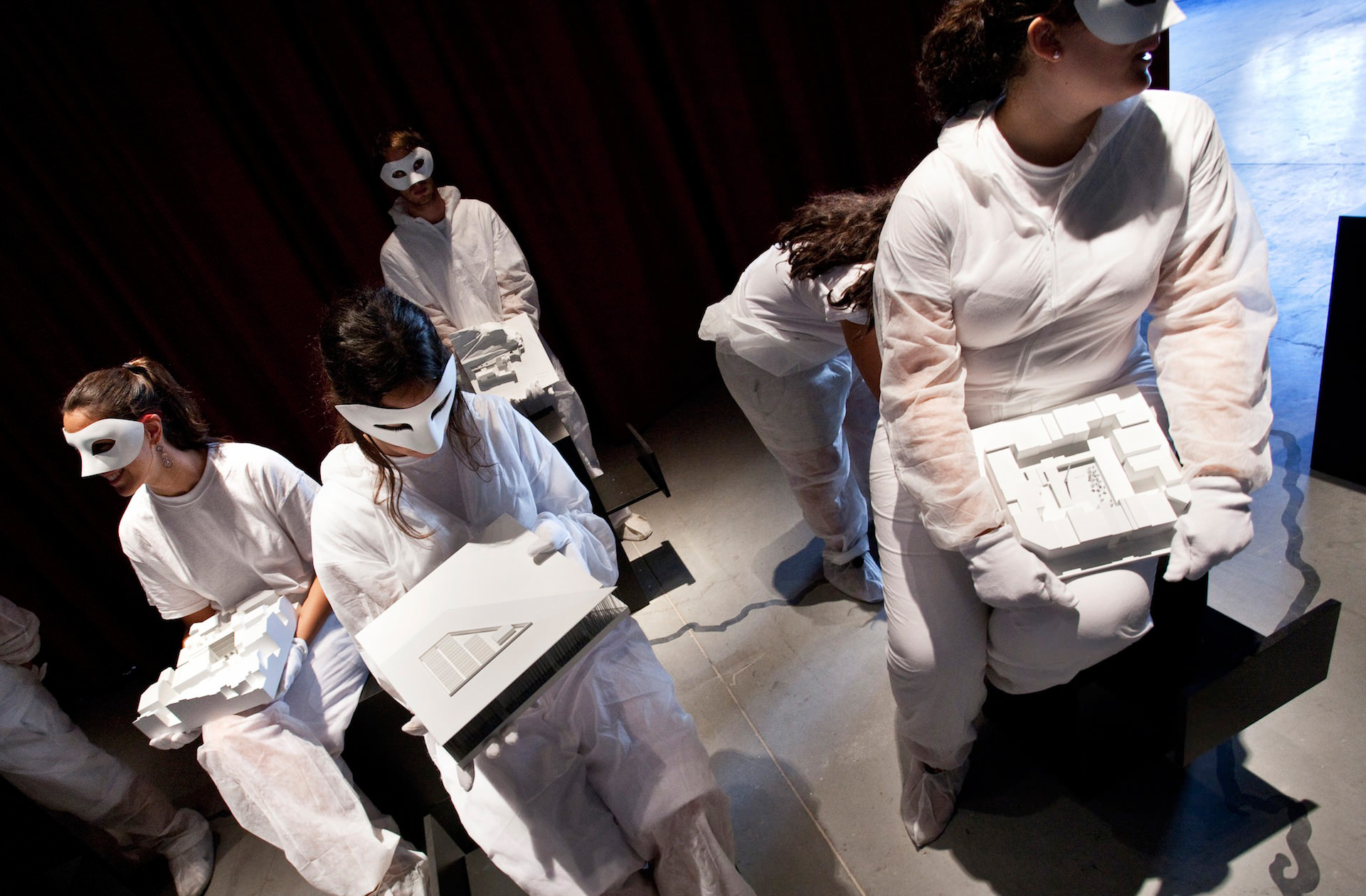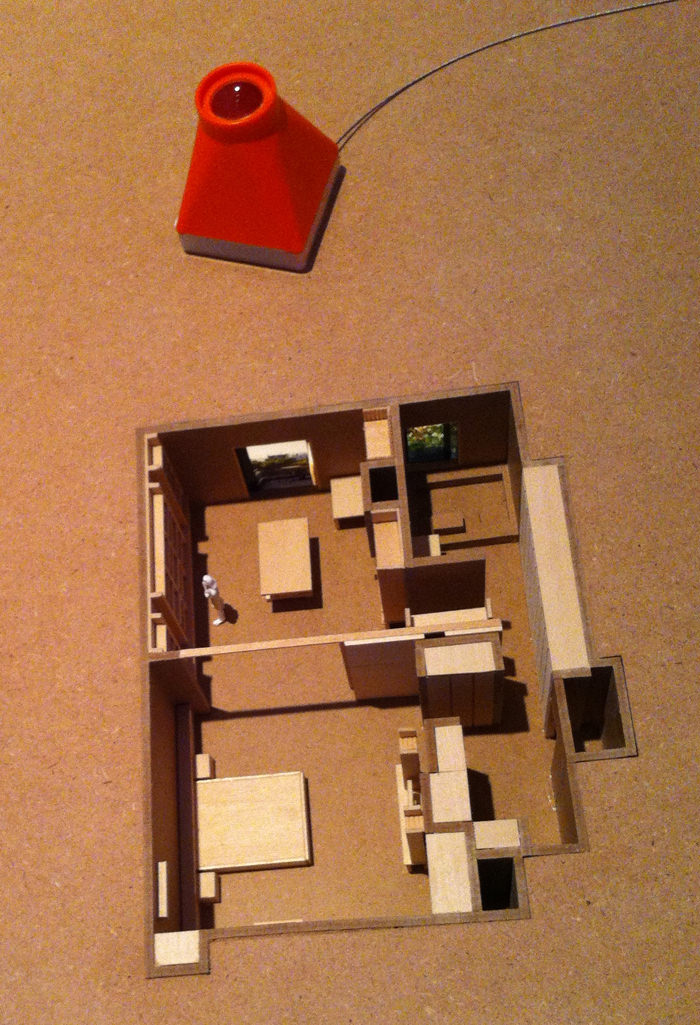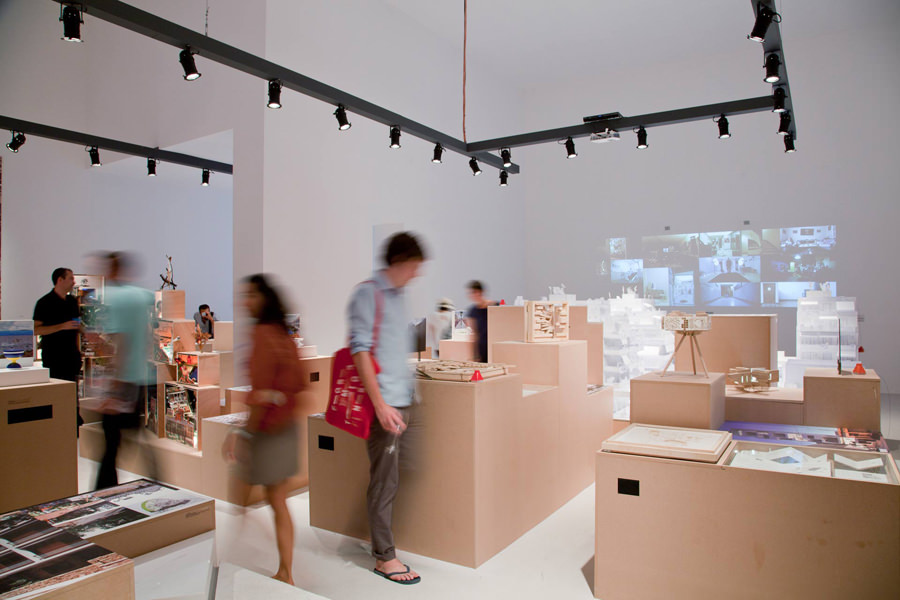-
Photo: Francesco Galli / Biennale di Venezia
ARCHITECTURE,
WITH LOVEGreece and Spain address economic turmoil
Text by Jessica Bridger -
Not everyone is partying like a baroque king as world economies struggle with gasping last breaths. Some of the superstars of the Eurozone crisis – Greece and Spain – contributed a bit of a lament for lost chances, cancelled projects, and stalled dreams to the biennale. The relentless and continued uncertainty and (yes) failure that financial upheaval has brought to architecture is obviously profound.
An outstanding representation of these simple facts that are astoundingly absent from most of the biennale is Spain Mon Amour, curated by Luis Fernandez Galiano. His installation, as part of the main exhibition, gathers 15 projects from the better days of the boom times by five renowned Spanish offices (Francisco Mangado, Nieto Sobejano, Mansilla + Tuñón, Paredes Pedrosa, and RCR), and places them in the hands of angels. Literally. The offices paid 200 Spanish architecture students, dressed as angels, lovingly present the projects personally to visitors. These students almost certainly will have to face economic instability in their future, so this act is doubly cutting.

In Spain Mon Amour, Spanish architecture students in costume presented models of projects completed before the financial crisis decimated domestic architecture and construction industries. (Photo: Francesco Galli / Biennale di Venezia)
-
With equally matched passion, the Greek Pavilion is also a requiem for architecture-related dreams killed by economic instability. But it is also hopeful. This hope is displayed in projective dreams, visions, and interventions for one of the cities most profoundly affected by the financial instability: Athens. Two complimentary subjects ground the pavilion: the examination of historical and current conditions in the typical Athenian apartment block, the polykatoikia, and the fraught issues surrounding the use of public space in the city. In a small but moving gesture, decaARCHITECTURE created tiny vignettes of the bedrooms of real inhabitants from across Athens’s socioeconomic spectrum. From the largest and most positive to the small and mundanely melancholy, the Greek Pavilion charts the current state of architecture as a serious, important discipline that is part of a larger context.


Tiny voyeuristic views into the lives of Athenians put an intimate spin on a large-scale problem. (Photo: Jessica Bridger)

A pastiche of public space and private lives figured large in the Greek Pavilion, where economic crisis and architecture came together. (Photo: Torsten Seidel)
-
Search
-
FIND PRODUCTS
PRODUCT GROUP
- Building Materials
- Building Panels
- Building technology
- Façade
- Fittings
- Heating, Cooling, Ventilation
- Interior
- Roof
- Sanitary facilities
MANUFACTURER
- 3A Composites
- Alape
- Armstrong
- Caparol
- Eternit
- FSB
- Gira
- Hagemeister
- JUNG
- Kaldewei
- Lamberts
- Leicht
- Solarlux
- Steininger Designers
- Stiebel Eltron
- Velux
- Warema
- Wilkhahn
-
Follow Us
Tumblr
New and existing Tumblr users can connect with uncube and share our visual diary.
»Architecture starts when you carefully put two bricks together. There it begins.«
Ludwig Mies van der Rohe
Keyboard Shortcuts
- Supermenu
- Skip Articles
- Turn Pages
- Contents


